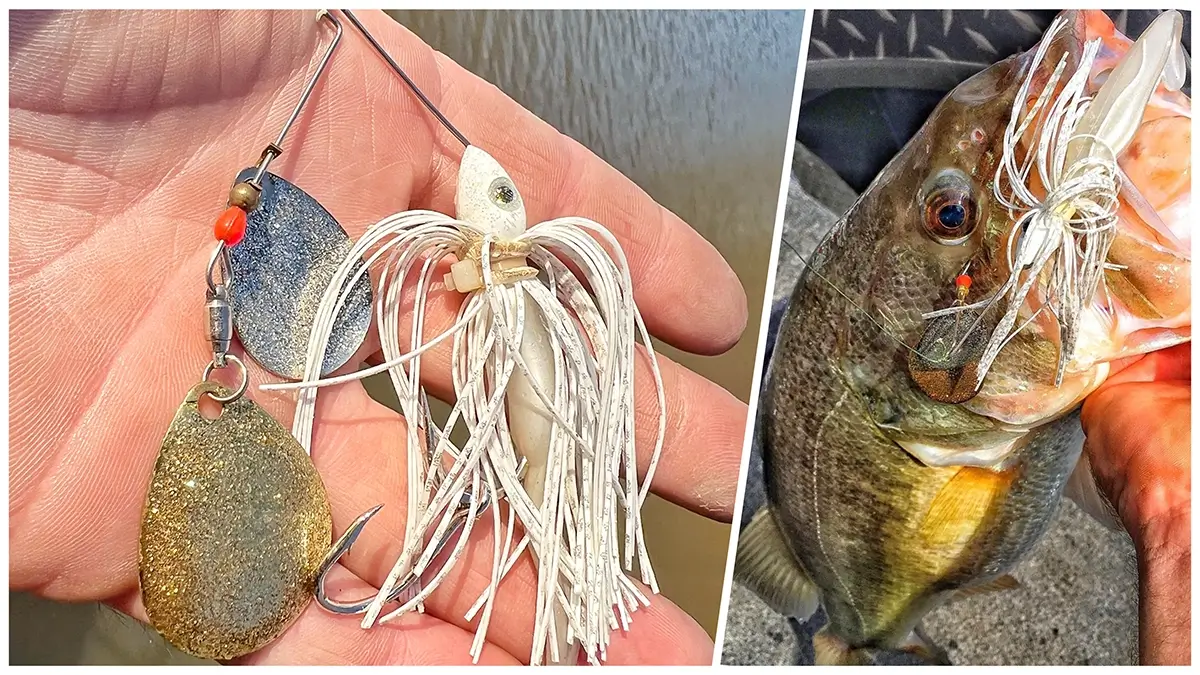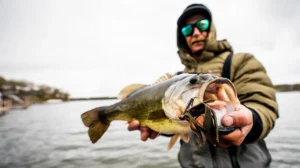A spinnerbait is one of the most versatile lures there is for bass fishing. If you want to target largemouth, smallmouth, and spotted bass in muddy water, clear water, deep or shallow water at day or night, in the winter, spring, summer, or fall — there’s a best spinnerbait for that.
But how do you rig the exact right spinnerbait for a specific set of circumstances and conditions, and how do you fish it once you’ve selected the right one?
I’m not sure “how to rig” a spinnerbait is the best vernacular here, since it sounds more like putting together a Texas or Carolina rig than it does selecting the right weight, skirt color, and blade combination.
But when you start adding in trailers and trailer hooks, the terminology of “rigging a spinnerbait” does start to be more applicable. The most important thing to start with though is definitely spinnerbait selection.
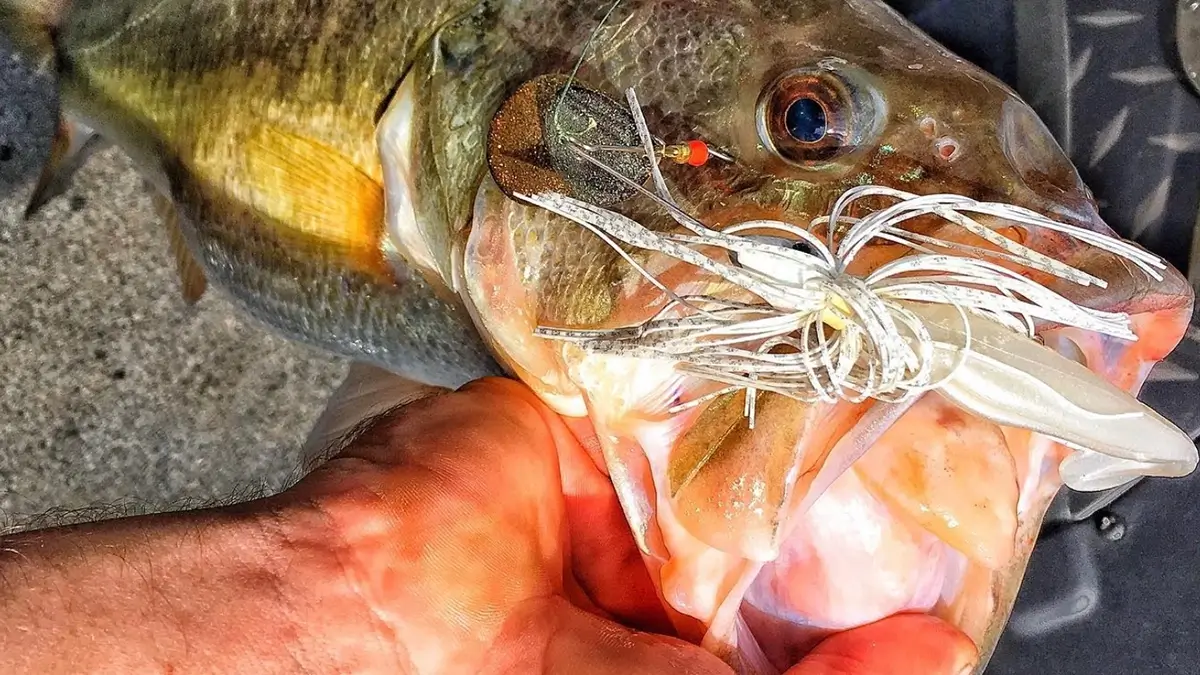
How to Select the Right Spinnerbait
You’re going to be looking at a few main variables: blades, head shape, weight, and skirt color. Each plays a role in how the spinnerbait fishes, and the amount of fish that will ultimately bite it.
Color Selection
Skirt color selection is pretty straight forward: You’ll want to choose a skirt color typically based on the match-the-hatch mentality. Select a color and pattern that looks a lot like the forage that’s in the area.
There are times when visibility has a big impact on color selection. For example, it’s a good idea to go with a chartreuse skirt in muddy water, because it shows up well, even though there are no chartreuse shad swimming around.
Similarly, a black skirt works really well at night, because the silhouette and profile show up better, even though shad aren’t black either. But, in most cases, just selecting a skirt color that looks like the natural bait in the area is best.
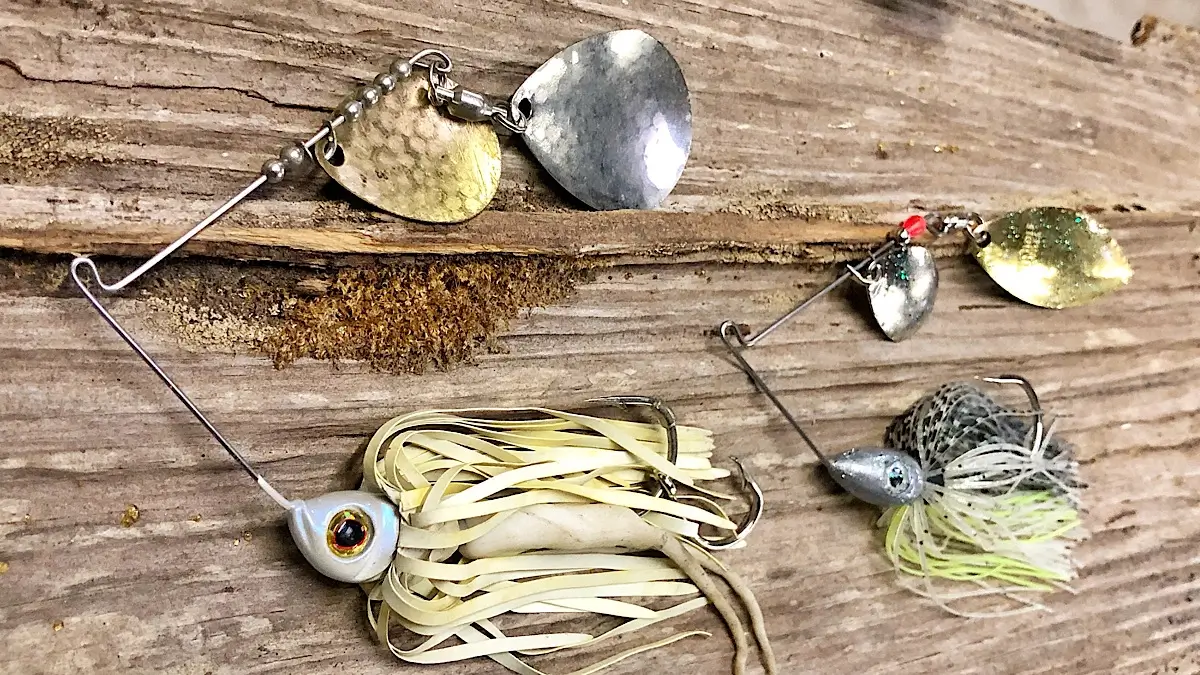
Head Shape
Of the several types of spinnerbait heads on the market, round heads, bullet heads and keel heads (minnow heads) comprise the three most popular.
Keel-style heads are ideal for fast retrieves, fishing higher in the water column (like burning spinnerbaits for clear water smallmouth).
Round heads are better suited to fishing rock and stumps. They are less likely to get wedged in branches or lay over on their side and get hung up.
Bullet heads offer a mix of the advantages of round and keel-style heads, but they can get wedged in the crevices between rocks and branches because of their pointy design. They can be fished high in the water column and also slowly through cover.
Weight Selection
Choose the weight of your spinnerbait primarily according to how deep you want to fish the bait with a secondary focus on how fast you want to fish it. What does that look like?
Well, say you want to fish your spinnerbait 6 to 8 feet deep. You could do this with a 3/4-, 1/2-, or a 3/8-ounce spinnerbait.
But, in order to keep the 3/4-ounce bait off the bottom, you’ll have to reel it really fast.
To get the 3/8-ounce bait to the bottom, you’ll have to fish it really slow.
The 1/2-ounce spinnerbait will land somewhere in the middle, which means you can use a more natural retrieve speed while still allowing the bait to get down to the desired depth.
Now, let’s take this example and shift seasons.
In the summer, when the water is hot, you may well be able to fish the 3/4-ounce bait and take advantage of the fact that you can get it down and fish it fast, which will allow you to cover more ground while still triggering strikes from the aggressive bass that are willing to chase the bait down in the warmer water.
Facing the same scenario in the winter, you’ll be better off going with the 1/2- or even 3/8-ounce bait. These lures will have to be reeled much slower to get them down that deep, which gives the lethargic winter bass more time to react to the bait.
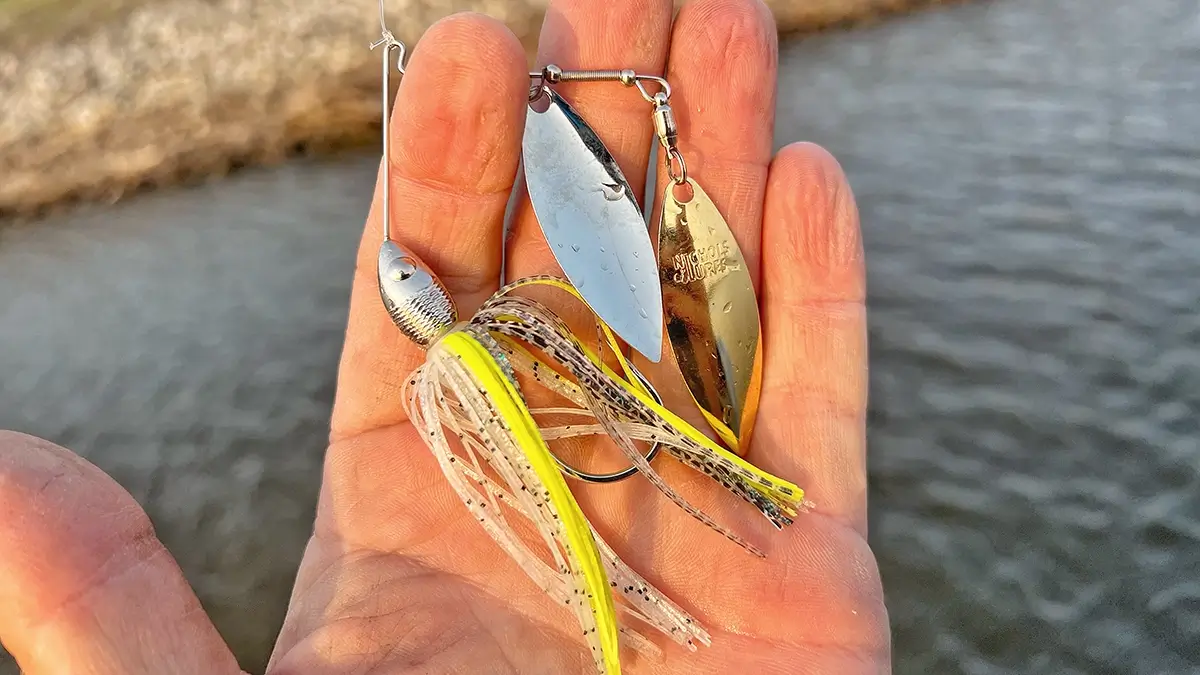
Arms
The material the arms are made of, as well as their shape and length, plays a role in how the spinnerbait performs in the water. Even subtle differences can have a big effect.
The diameter of the wire used varies from manufacturer and model, but has a huge impact on action and durability. Spinnerbaits built with lighter wire tend to produce more vibration, making them a good choice for shallow, dirty water. But fine-diameter wire has a tendency to open up on the hookset and the fight, so a thicker wire can often be more advantageous.
Some manufacturers actually use a tapered wire to give a bait more durability while maintaining vibration. In these instances, the wire used in the arm has a heavier gauge near the head but is lighter near the blades.
The length of the arm also changes the action. The shorter the distance from the head to the R-bend, the better a spinnerbait will come through cover. The longer the back wire or the wire from the R-bend to the blades the more it protects the hook in cover.
Spinnerbaits designed for use in night time typically have a short front wire and short back wire. That keeps the bait compact because the fish usually strike at the vibration rather than by sight.
Adjusting the spread of the wire lets you fish it faster or slower. Opening it gives the spinnerbait more lift so it will want to come up in the water column, letting you slow it down without cutting down on vibration. Closing the wire gives you more speed, and it will be more apt to stay down and not rise to the surface.
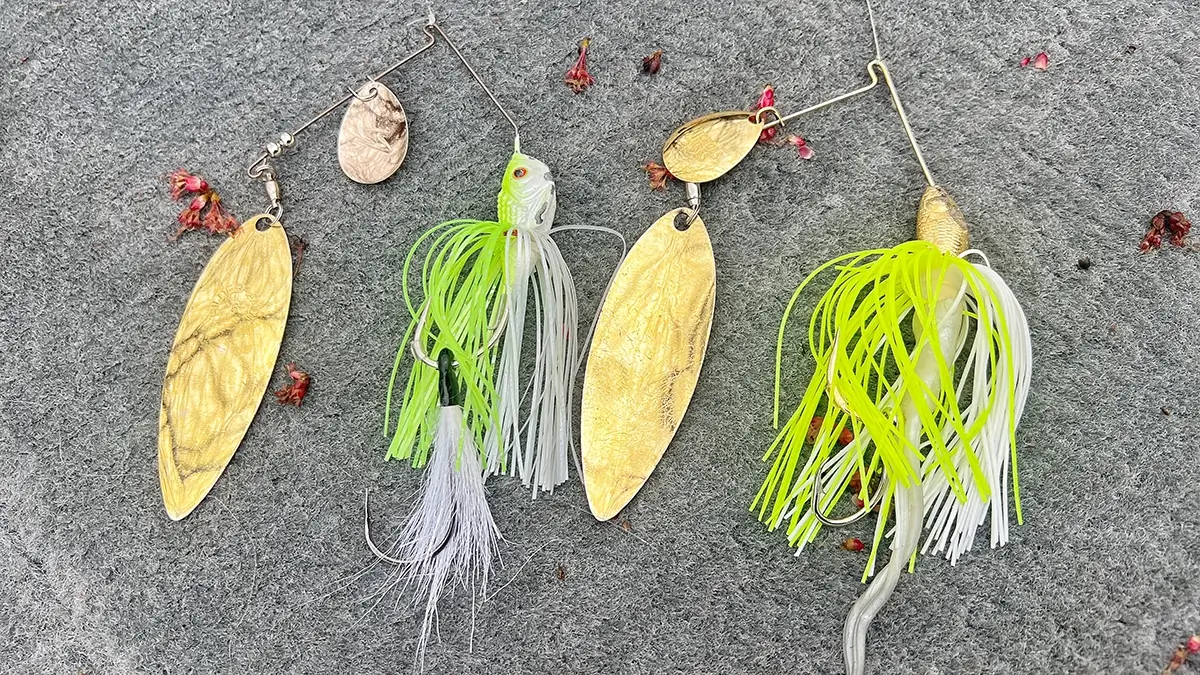
Blade Choice
Choosing the right skirt color and weight were supposed to be the easy parts, and there are plenty of things to consider there. But you can really get into the weeds when it comes to blade selection if you’re not careful.
Let’s try to simplify the process a bit by focusing on the differences between the two most common blade types, willow and Colorado. Then we’ll look at the three most common combinations of these blades: double Colorado, double willow, and tandem (Colorado/willow).
Selecting the Right Blade Color
The two most popular colors in spinnerbait blades are gold and silver (or nickel). Again, go with the color that matches the hatch best to start. Silver, for instance, looks the most like a threadfin shad, while gold works well when imitating golden shiners down on Florida fisheries. Gold also shows up really well in tannic, dark colored water while silver is usually best in clear water.
When the water gets a little bit of dinginess to it, combining one silver blade with one gold blade works great.
Generally, you should use a black blade at night, and there are times when painted blades work really well, like when targeting smallmouth bass in clear water on cloudy days, or largemouth in super muddy water.
Speaking of muddy water, you’ll find that it’s more important to increase the size of the blades than it is to concern yourself as much with what color they are.
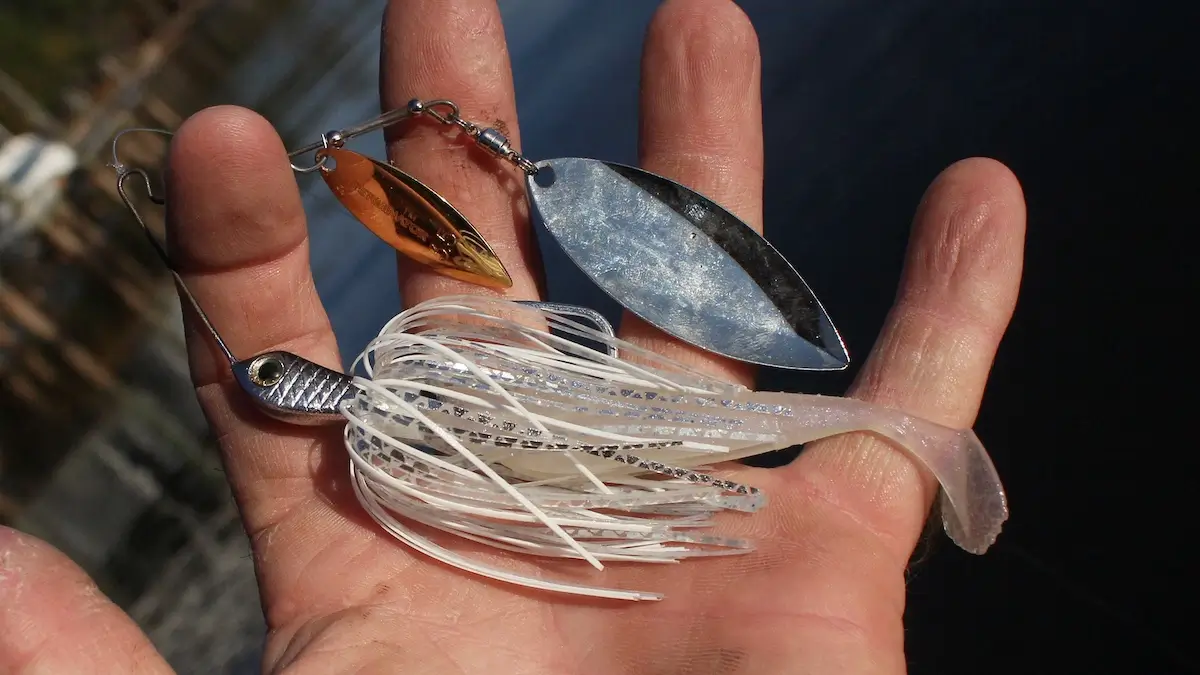
Choosing the Right Size, Shape, and Combination of Blades
Willow leaf blades are more elongated and give off less vibration and flash for their size than Colorado blades, which are more circular. Standard operating procedure says to lean toward willow leaf blades when you have clear, calm, or warmer water, and then go with the Colorado blades in cold and/or muddy conditions.
A tandem Colorado/willow spinnerbait works really well in the spring and fall when water colors and temperatures are typically somewhere in the middle.
Colorado blades are super effective in muddy water, because they give off a ton of vibration and this helps the bass track the bait down using its lateral line as opposed to just its eyes.
When the bass does get close to the bait, the large flash of the big round blade helps it zero in.
These blades perform well in cold water, too, because they create a lot of resistance, which slows the spinnerbait down. For these reasons, it’s a good idea to use a double Colorado spinnerbait in shallow, cold, and muddy water, for example.
Willow leaf blades still give off a lot of flash and vibration, though both are in smaller doses than what you’d expect to see from Colorado blades. Willow leaf blades also offer less resistance, so in a situation where you want to fish your bait fast along the surface in pretty clear water, a double willow leaf spinnerbait is a great option.
When it comes to the best all-around spinnerbait, you really want to consider using a Colorado/willow combination. Placing a smaller Colorado blade up on the arm of the bait and a larger willow leaf blade out on the end gives you the best of both worlds. Mixing a silver and gold blade together with this combination also rounds out the overall package well.
This is a great bait selection for fishing around all sorts of cover in water that’s fairly clear to pretty muddy and in water temps ranging from 52 to 80+ degrees.
How to Rig a Spinnerbait
Let’s look at all the options you have when it comes to rigging or modifying a spinnerbait. In this section we will focus on two key pieces of the puzzle: trailers and trailer hooks.
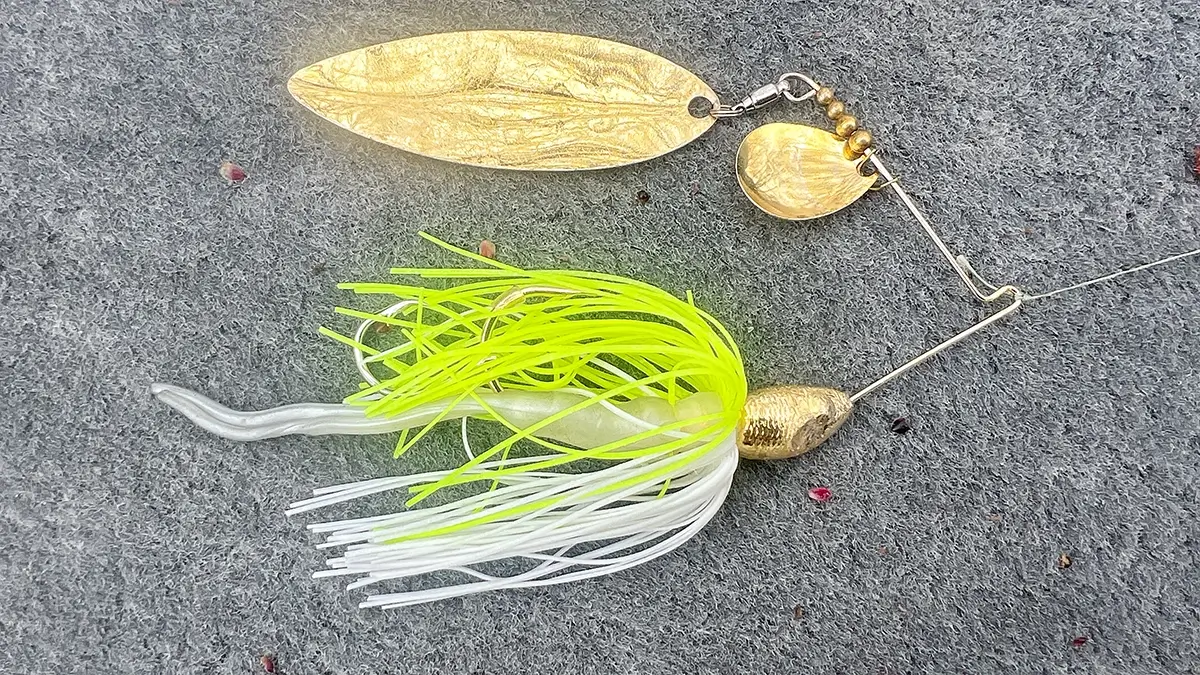
Soft Plastic Trailers
You can really change a lot about a spinnerbait by adding a soft plastic trailer to the back of it, from the overall profile, to how it moves through the water, and how fast or slow it falls. The right trailer can make all the difference.
There are four primary types of trailers for spinnerbaits: split-tail, grub, swimbait, and craw.
Swimbaits and split tails are the two I personally use the most. Craw trailers do a good job of increasing the overall profile of the bait while also slowing it down, which is why I like to use a Zoom Twin Tail Grub on a night blade in the summer.
Single tail grubs add a nice slow and subtle action without a lot of resistance, so these are great for fishing in current, for instance.
Most of the time, a split-tail or swimbait is preferable. The split-tail really gives you the most bang for your buck. You get a good bit of action without really changing the speed of the bait moving through the water, either on the retrieve or the fall.
The Z-Man Split TailZ are great for this. If you want a little more action while simultaneously beefing up the profile of the bait, all without changing much about how the spinnerbait performs in the water, go with something like a Reaction Innovations Skinny Dipper.
For more information on this topic, checkout the extensive article we did a while back on how to select the right soft plastic trailer.
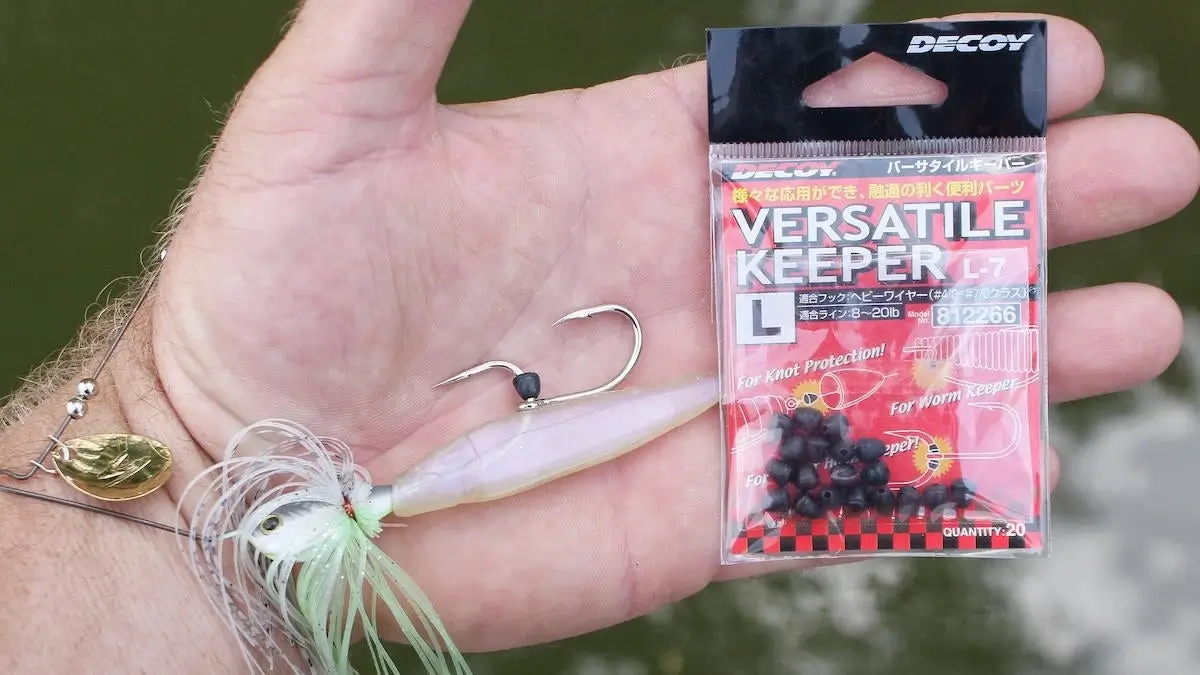
Trailer Hooks
You can also add a trailer hook to the back of your spinnerbait. This gives you a better chance of hooking short-striking fish, but it also increases the chance of the bait hanging up in cover. But, generally, if you choose the right hook and attach it to your bait correctly, you should still be able to use it in reasonably thick brush, laydowns, and sparse or submerged vegetation.
When selecting a trailer hook, go with a size that’s slightly smaller than the spinnerbait hook, and be sure to orient the trailer hook in the same direction as the main hook.
To do this, run the spinnerbait hook point through the back of the eye of the trailer hook.
Then, when the trailer hook comes to rest in the bend of the main hook, you should see that the hook points are both facing the same direction.
This helps ensure your bait stays as weedless as possible.
If you want to use a soft plastic trailer and a trailer hook, you’ll need to put the trailer on first, then your trailer hook. Once you’ve slid your trailer hook on, you’ll need to secure it with some sort of stopper so it doesn’t come off during a fight.
Some trailer hooks come with a stopper covering the eye of the hook, like the True Bass True Lock Trailer Hook. Other hooks will need something like a Decoy Versatile Keeper rubber stopper added to the main hook to keep the trailer hook from falling off or being pulled off.
You can read more about 5 Hacks for Securing Bass Fishing Trailer Hooks here.
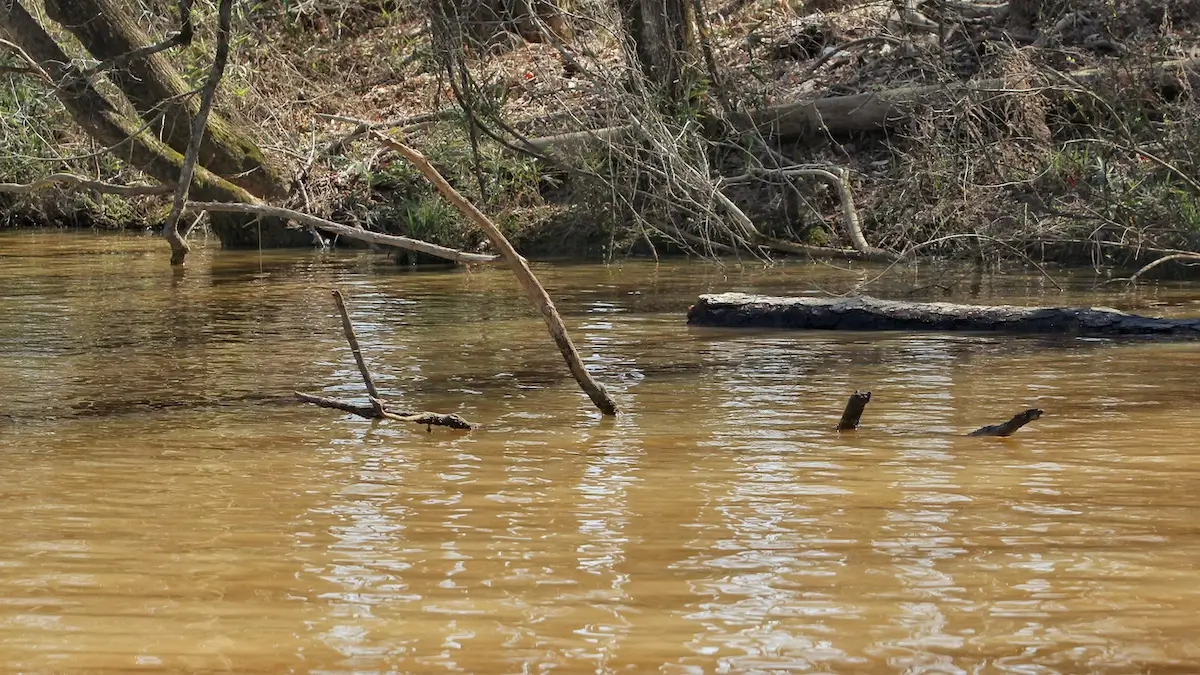
How to Fish a Spinnerbait
There are a lot of subtle shifts in technique that can be used to fish a spinnerbait a variety of different ways, from slow rolling in cold and muddy water, to burning one along the surface. But in all instances, you’ll want to do a few things.
Fish Around Cover
Spinnerbaits can certainly be used to catch fish in open water, but nine times out of 10 you’re going to find better success with a spinnerbait fishing around isolated cover like dock posts, stumps, and boulders. Also focus on areas along hard cover, like riprap, bluff walls, and seawalls.
Cover that fish can get down into, like laydowns, brush piles, and grass patches, also make for prime spinnerbait fishing real estate. Bass will intentionally position themselves near this kind of cover to ambush and corral prey. A spinnerbait fished near these spots is exactly what they think they’re looking for.
Steady as She Goes
Spinnerbaits are subsurface baits that are intended to be fished on the move. Though they can be burned just beneath the surface or slow rolled near the bottom, they’re not topwaters nor are they bottom hopping baits.
You don’t drag a spinnerbait along the bottom like a jig, you reel it along. This allows the blades to spin and the weight of the bait to pendulum down, so that the hook point faces up.
Keeping the bait upright like this is important, and that brings us to…
Keep the Bait Upright
Keeping the bait moving on a somewhat constant retrieve does one key thing: It keeps the hook upright. This is very important because it not only gives you the best chance of hooking a bass in the most optimal place — the top of the mouth — but it also allows the bait to come through cover as well as it possibly can.
If the bait kicks over to one side or falls down into cover, the hook has a greater chance of hanging the cover. So, you want to reserve any of that type of stuff for open water or for right after you clear the cover.
Kill the Bait
Killing a spinnerbait right after it clears cover is a great way to create an irregular action and get more bites.
“Killing a spinnerbait” just means that you stop reeling the bait for a second right after it comes out of a brush pile, over a rock, or through a patch of grass. This momentary pause allows the bait to fall slightly and the blades to tumble and flutter. This is a great way to trigger a strike and all of this can happen with no worry of the bait hanging up, since it just cleared the cover.
Pump Your Rod Tip
It’s also a good idea to impart irregular action on your bait by pumping or twitching your rod tip during the retrieve. This creates a fleeing look to your spinnerbait without the hook rolling over and risking hanging up, and it’s a much more effective way to trigger strikes than a steady retrieve.
To do this, never stop reeling your bait. Instead, intermittently give a quick pump to the rod tip every few seconds.
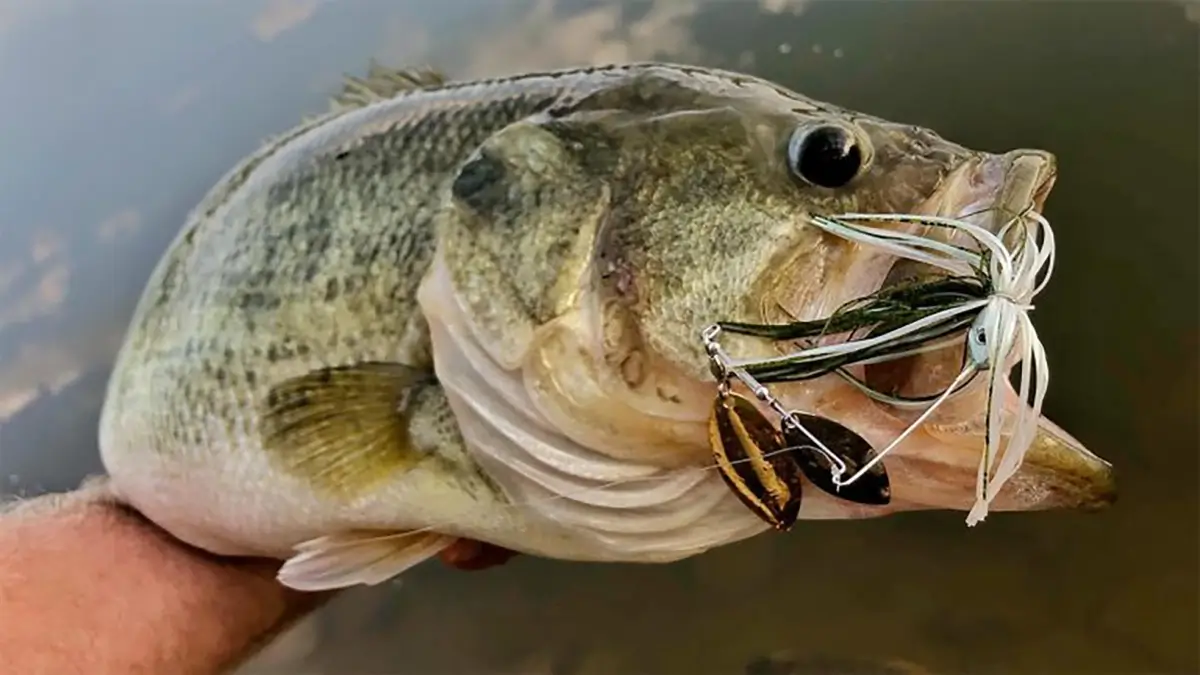
Final Thoughts on Fishing a Spinnerbait
I personally love to fish a spinnerbait. Next to frogging and punching, fishing a spinnerbait is my favorite way to fish — and a it is definitely the top lure I rely on for a big bite, day in and day out.
Spinnerbaits are just so versatile, with options that can be used throughout a wide range of water clarities, depths and temperatures, as well as around all sorts of cover or even out in open water. It really just comes down to selecting the right bait for the task and then knowing how to fish it.


